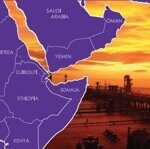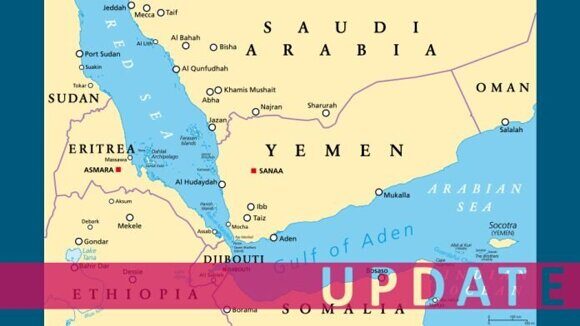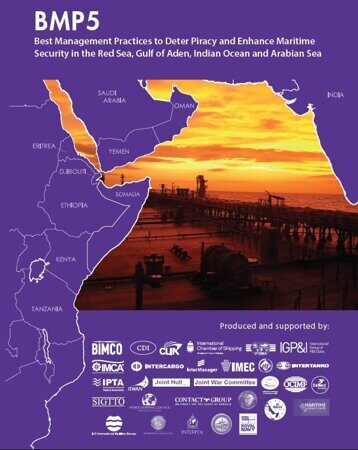 Security Guidelines for Southern Red Sea and Gulf of Aden 04.02.2024 02:16
Security Guidelines for Southern Red Sea and Gulf of Aden 04.02.2024 02:16
THREAT CONSIDERATIONS
In the past, Houthi forces have attacked merchant shipping using antiship missiles, water-borne improvised explosive devices (WBIED), and unmanned aerial vehicles (UAV). Furthermore, they have laid mines to protect port entries for ports under their control, and on rare occasion such mines have become detached from their tether and have drifted into the traffic lanes.
The current maritime threat from the Houthi forces is greater in vicinity of the Yemeni Red Sea coastline where they are present.
While the airborne threat from helicopters cannot be ruled out during hours of darkness it is probably greater during daylight hours where targets are more easily identified and attacked/boarded. The challenge of visually detecting and classifying small contacts at night, such as a water-borne improvised explosive devices (WBIED), remains.
Recent attacks using drones and anti-ship missiles have also been carried out during hours of darkness. Maintaining lookouts during the entire passage, regardless of timing, is necessary.
Ship operators which have called, or plan to call, Israeli ports should limit information access. Published information could be used by the Houthis.
As per BMP 5, ships planning a passage through the Southern Red Sea and Gulf of Aden should conduct a thorough ship and voyage specific threat and risk assessment considering any additional advice from their flag State. These assessments should include a specific update with input from official sources such as UKMTO for the period of operation, the latest update from relevant shipping associations, ownership details, and trading history of the ship in the last 3 years.

ROUTING CONSIDERATIONS
Ship owners, operators, managers, and staff should regularly evaluate the risks to their ships, including navigation and collision avoidance, and plan routes accordingly.
The Master retains ultimate responsibility for ensuring vessel safety and security.
Note that the Bab el-Mandeb Strait is narrow and when passing north bound, ships within the Traffic Separation Scheme will be no more than approximately 7 nautical miles from the Yemeni coastline.
The industry recommendation to use the Maritime Security Transit Corridor (MSTC) remains unchanged in light of the recent attack. The MSTC is the amalgamation of the Internationally Recommended Transit Corridor (IRTC), the Bab el-Mandeb Traffic Separation Scheme and the Traffic Separation Scheme West of Hanish Islands, and a two-way route directly connecting the IRTC and the Bab el-Mandeb Traffic separation Scheme.
VESSEL HARDENING CONSIDERATIONS
Hardening measures are described in BMP5 and advice on the website www.maritimeglobalsecurity.org can be applied in areas of the ship where insertion of armed men by helicopter may be likely. The use of citadels / safe areas has proven to be successful in preventing the hijackers taking over the control of the ships. This has also provided valuable time for the Naval vessels within the areas to arrive for assistance. Use of citadel requires thorough preparation and understanding of advantages and pitfalls – the guidelines in BMP5 applies.
CONSIDERATIONS REGARDING ARMED GUARDS
Complete a thorough risk assessment when considering the use of armed guards. Caution should be taken when managing their employment and rules of engagement should consider the risk of escalation.
REPORTING
In the event of any incident, suspicious activity, or concern:
• Report any suspicious activity or concerns to the UKMTO at watchkeepers@ukmto.org +44 2392 222060
• If under attack, please contact US Naval Forces in Bahrain directly on +973 1785 3879
